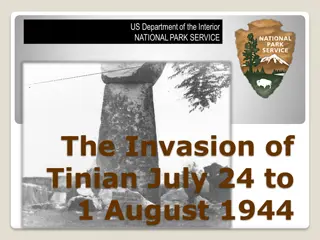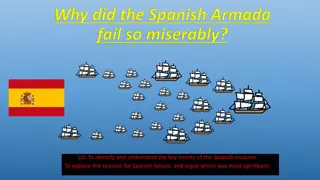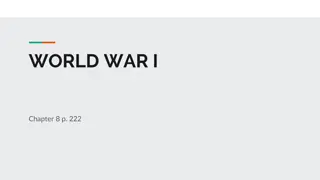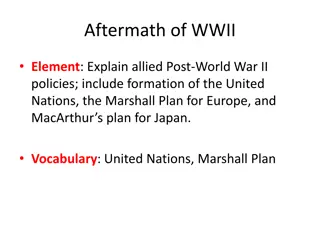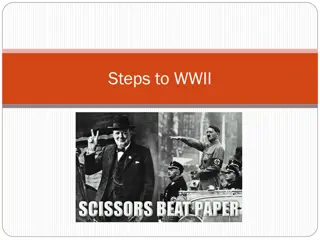Allied Operations in World War II Leading to the Normandy Invasion
During World War II, strategic operations such as pushing Axis forces back in Italy, the Casablanca Conference decisions, and planning for the Normandy invasion played crucial roles in the eventual Allied victory. Key events included capturing Sicily, the arrest of Mussolini, agreements between world leaders, the selection of Eisenhower to lead the invasion of France, the element of surprise in Operation Overlord, and the successful Normandy landings despite challenges at Omaha beach.
Uploaded on Nov 14, 2024 | 0 Views
Download Presentation

Please find below an Image/Link to download the presentation.
The content on the website is provided AS IS for your information and personal use only. It may not be sold, licensed, or shared on other websites without obtaining consent from the author. Download presentation by click this link. If you encounter any issues during the download, it is possible that the publisher has removed the file from their server.
E N D
Presentation Transcript
Casablanca Conference Strategic Bombing Striking at the Soft Underbelly Italy was considered to be the weak area of Europe Sicily was captured July 19, 1943 The attack on Sicily created a crisis within the Italian government The king of Italy and a group of Italian generals decided to arrest Mussolini and announce Italy s surrender. Germany continued to fight in Italy against the Allies.
The three leaders agreed on several issues: Stalin agreed to launch a full scale offensive against Germany when the Allies invaded France Germany was to be broken up so as to never start another war Stalin agreed that once Germany was beaten the Soviet Union would help the United States defeat Japan Stalin agreed to help set up an international organization to help keep peace after the war (United Nations)
General Dwight D. Eisenhower was chosen to lead the invasion of France Operation Overload
Hitler fortified the coast of France The Allies had one advantage the element of surprise. Hitler believed the Allies would land in Pas-de-Calais To convince the Germans they were right, the Allies placed inflated rubber tanks, empty tents, and dummy landing craft along the coast across from Calais
Eisenhowers planning staff referred to the day any operation began by the letter D. The date for the invasion, therefore, came to be known as D D- -day. day.
Nearly 7,000 ships,100,000 soldiers, and 23,000 paratroopers set sail for Normandy on June 6, 1944 Normandy was divided into beaches code named Utah , Omaha , Gold , Sword , and Juno . The landings at Utah , Gold , Sword , and Juno went very well (less than 200 casualties at Utah beach). The American forces landing at Omaha beach had a difficult time (over 2,500 killed or wounded)
Island Hopping in the Pacific Coral reefs made it difficult for landing craft to release troops onto the beaches. Casualties were very high as troops were forced to wade ashore under enemy fire. (Over 1000 Marines died at Tarawa) MacArthur Returns to the Philippines The Battle of Leyte Gulf Kamikaze Attacks: divine wind in Japanese, kamikaze pilots deliberately crashed their planes into American ships Over 1000 Marines died at Tarawa)


